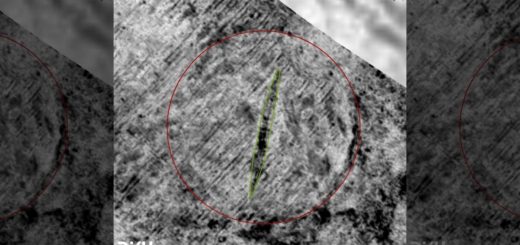TOP RATE What is the R rate and why is it so important?

THE R rate, also known as the reproduction number, has been crucial to the government’s understanding of the threat of coronavirus.
Scientists and government officials have been using the R value to help them determine how to tackle the spread of Covid-19 and easing of lockdown measures.
⚠️ Read our coronavirus live blog for the latest news & updates
People cross London Bridge on the way into the City as the government announced a series of measures to slowly ease lockdown
5
People cross London Bridge on the way into the City as the government announced a series of measures to slowly ease lockdownCredit: London News Pictures
What is the R value?
R0, or R nought, refers to the average number of people that one infected person can expect to pass the coronavirus on to.
Scientists use it to predict how far and how fast a disease will spread – and the number can also inform policy decisions about how to contain an outbreak.
For example, if a virus has an R0 of three, it means that every sick person will pass the disease on to three other people if no containment measures are introduced.
It’s also worth pointing out that the R0 is a measure of how infectious a disease is, but not how deadly.
Taking London as an example, with a current R value of 0.4 for coronavirus, it means that for every ten people who have the virus, it will be passed on to only four more people.
The low R value means that if everyone continues lockdown and social distancing measures, London would theoretically be virus free by the end of May.
5
What does it mean for Covid-19?
The World Health Organisation (WHO) estimated at the start of March that the coronavirus R0 stood somewhere between 2 and 2.5.
The UK is now generally below that because of the lockdown and the social distancing measures we have been doing over the past two months.
In comparison, the seasonal flu is estimated to be roughly 1.3 while measles has a reproductive value of between 12 and 18.
Despite this, these figures are not set in stone because a given pathogen’s R value changes with place and time.
Jonathan Ball, professor of molecular virology at the University of Nottingham, told The Telegraph: “R0 is an indication of how much an infectious virus will spread in a population, and various things impact that value.
CORONAVIRUS CRISIS – STAY IN THE KNOW
Don’t miss the latest news and figures – and essential advice for you and your family.To receive The Sun’s Coronavirus newsletter in your inbox every tea time, sign up here.
To follow us on Facebook, simply ‘Like’ our Coronavirus page.
Get Britain’s best-selling newspaper delivered to your smartphone or tablet each day – find out more.
“The susceptibility, size and density of the population that the infection is introduced into matters, as well as the infectiousness of the virus itself.”
Predictions of the R0 for Covid-19 are currently varied because no one knows exactly how many people have been infected in total.
According to modelling published by Imperial College London, the R value stood somewhere between 3 and 4.6 in Europe before lockdowns came into effect.
What is the R rate in the UK?
The most recent estimate of the nation-wide R-rate is said to be between 0.7 and 1.
Below R1 is the important bit because it means the virus will likely peter out, but things are generally worse in the north of England to the point that the trend could reverse.
New data released May 14 from Cambridge University suggests that in the North East and Yorkshire the R rate – the average number of people an infected person can pass the virus on to – is feared to be at around 0.8.
The South West has an R rate of 0.76, slightly more than the North West which has a rate of 0.73.
Both the East of England and South East have a rate of 0.71, followed by the Midlands with 0.68 and finally London with 0.40.
5
On May 10, 2020, Boris Johnson urged the British public to help reduce the R value.
In his address to the nation, he said: “It depends on all of us – the entire country – to follow the advice, to observe social distancing, and to keep that R down.”
He added: “We must make sure that any measures we take do not force the reproduction rate of the disease – the R – back up over one, so that we have the kind of exponential growth we were facing a few weeks ago.
“And to chart our progress and to avoid going back to square one, we are establishing a new Covid Alert System run by a new Joint Biosecurity Centre.
“And that Covid Alert Level will be determined primarily by R and the number of coronavirus cases.”
He continued: “And in turn that Covid Alert Level will tell us how tough we have to be in our social distancing measures – the lower the level the fewer the measures.”
The higher the level, the tougher and stricter we will have to be.
During one of the Downing Street press conferences, Sir Patrick Vallance revealed that it was “highly likely” there is an R value in the community of less than one.
This means that every infected individual passes the disease to less than one other person.
This shows the lockdown has had a positive impact on the coronavirus outbreak as to bring an outbreak under control the R0 value needs to fall below one.
However, when the number remains higher than one, the epidemic will grow.



 Creators of mankind
Creators of mankind Description of “Tall white aliens”
Description of “Tall white aliens” Where they came from?
Where they came from? About hostile civilizations
About hostile civilizations The war for the Earth
The war for the Earth “Tall white aliens” about eternal life
“Tall white aliens” about eternal life Video: “Nordic aliens”
Video: “Nordic aliens” Aliens
Aliens Alien encounters
Alien encounters The aliens base
The aliens base UFO
UFO Technology UFO
Technology UFO Underground civilization
Underground civilization Ancient alien artifacts
Ancient alien artifacts Military and UFO
Military and UFO Mysteries and hypotheses
Mysteries and hypotheses Scientific facts
Scientific facts


















